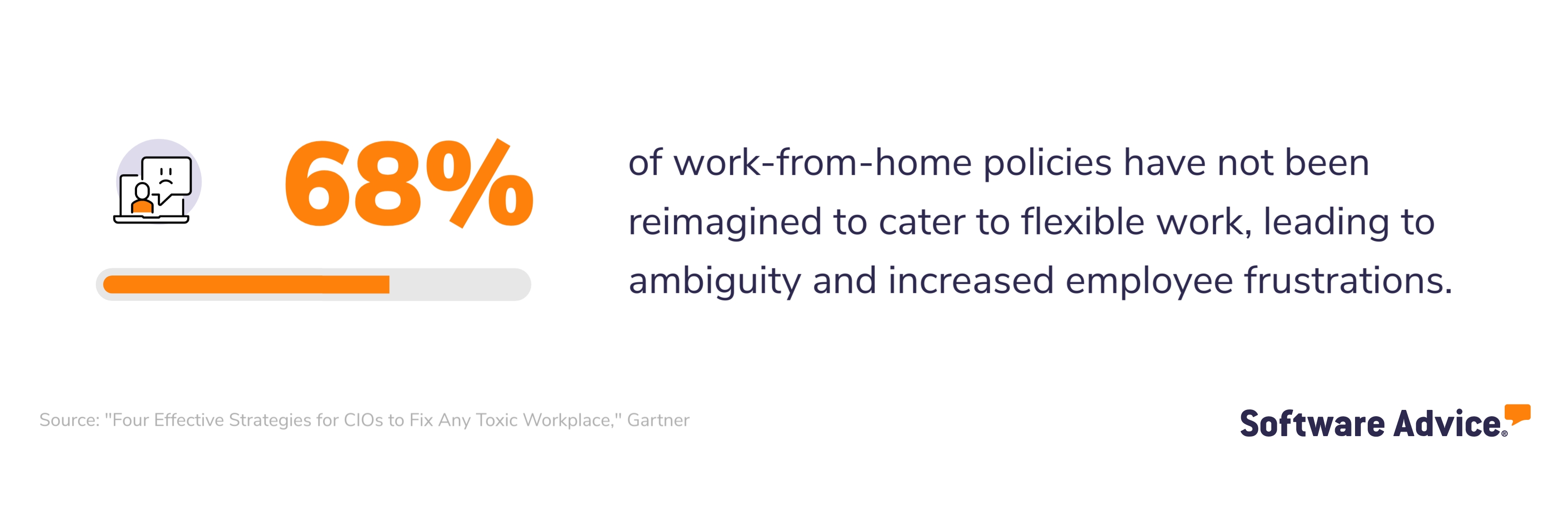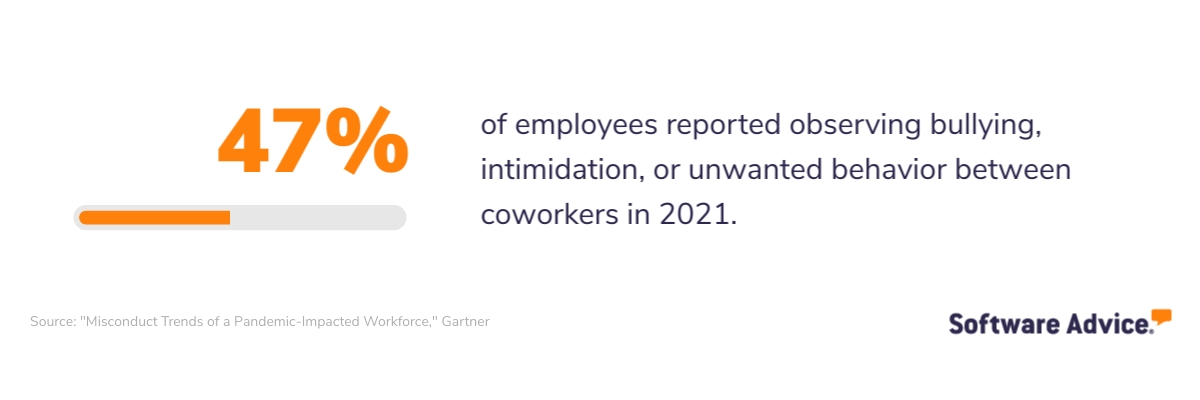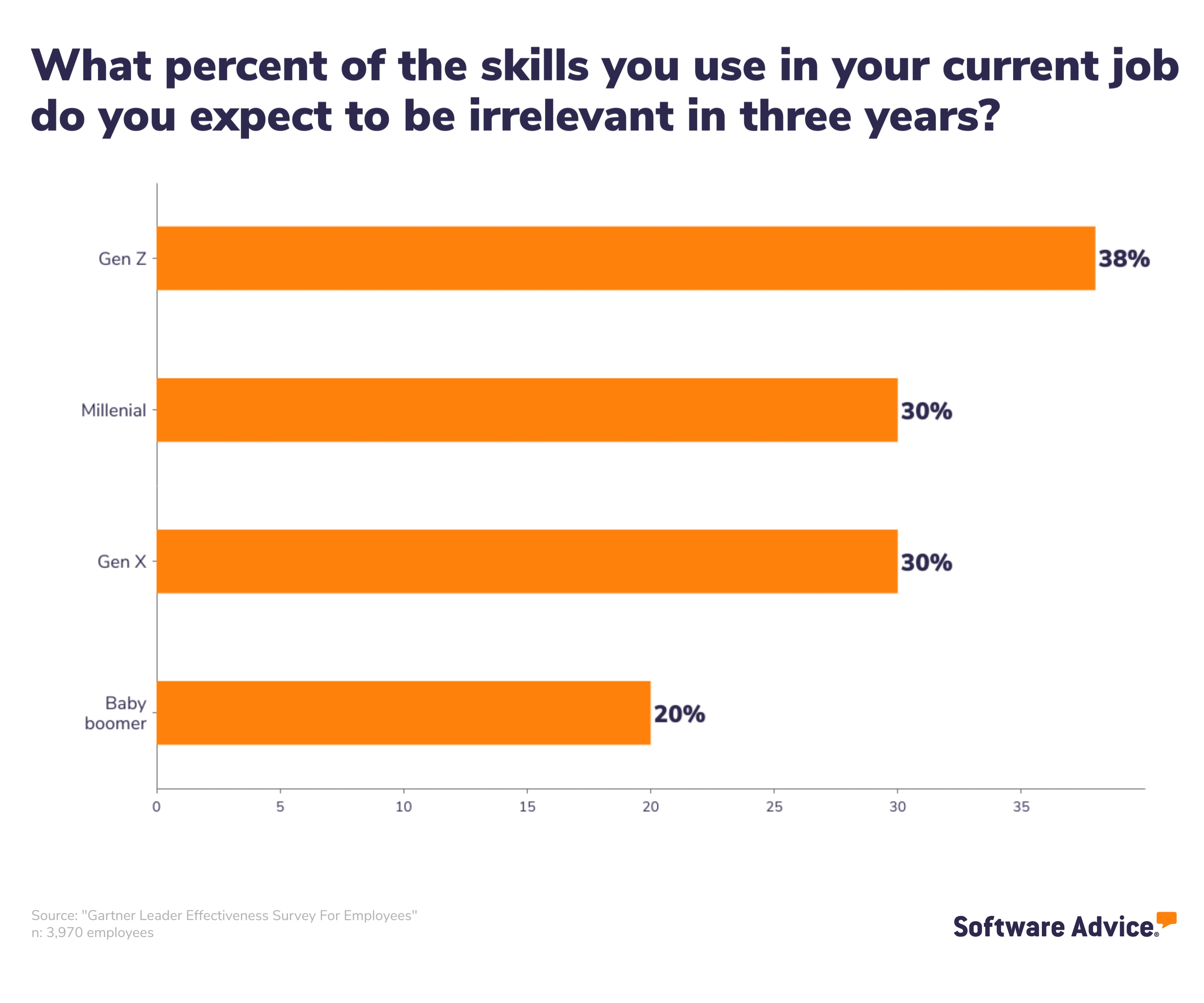Employee Mental Health: Promoting Well-Being in the Workplace
HR leaders: If you're not convinced that you need to be prioritizing employee mental health, consider this: Just over 4 in 10 U.S. employees (41%) say it's likely that they would leave their current job if they were offered a new job with significantly better mental health benefits. [1]
It's not enough for today's organizations to provide a subscription to a meditation app and call it good—employees need mental health support that addresses the unique challenges in their lives. And while that may sound like a complicated (and expensive) endeavor, we're going to show you just how straightforward it can be by diving into five factors that Gartner has identified have an impact on employee mental health. [2]
As we outline those factors and explain the different mental health benefits and initiatives you can offer to address them, you'll also hear from Macy Mader, a mental health advocate who currently works as the Learning & Development Manager at YETI. [3]
What factors impact employee mental health?
Gartner has identified the following five factors as having an impact on employee mental health [2]:

Ahead, we'll look at each factor in depth and how organizations can support them.
1. Financial security
Financial stress is far from uncommon; According to a CNBC report from 2023, 77% of Americans report feeling anxious about their financial situation. [4] And unfortunately, it seems like they have reason to worry—Software Advice's HR Tech Recession Planning Survey revealed that the majority of HR leaders believe a recession is upon us*:

To add to this, employees also have to deal with stress related to their job security. Layoffs were heavy in 2022, and 2023 is shaping up to be worse: 136,000 employees were laid off during the first three months of 2023—more than the previous two fiscal quarters combined. [5]
While there's not much HR departments can do about the ongoing economic disruptions, there are a few ways organizations can support employees' financial well-being.
Initiatives that support financial security
1. Retirement benefits
Offering pension plans or 401(k) matching is a benefit many of today's employers provide to their workforce, so if you’re not doing that, this is where you should start. In Software Advice's Employee Benefits Survey, 98% of participants stated that their employer offers retirement benefits.** But here's the more important stat: Survey participants estimated that 71% of their workforce took advantage of this offering.
Providing retirement benefits helps your employees invest in their future. And if pension plans are far too costly, consider 401(k) matching, which is a more affordable option due to the fact that employees have to take action by enrolling and making contributions of their own.
2. Financial wellness programs
Financial wellness programs address employee wellness by educating and advising workers as they establish their financial standing and plan for the future. There are different types of financial wellness programs, from e-Learning courses to in-person coaching sessions.
Offering financial counseling through an employee assistance program is a great way to support workers' financial well-being, and it's not too difficult to find a third-party provider who specializes in delivering these kinds of programs.
Read more
Learn how to set up an employee assistance program: How to Set Up a Small Business EAP
2. Living situation
Since the peak of COVID-19, flexible work arrangements have gone from being an employee perk to an expectation. A Gartner survey from 2022 indicated that 66% of organizations had already adopted a hybrid workplace model, and another 30% were planning to near the end of 2022. [6]
But while there are many benefits of hybrid and remote work arrangements, there are downsides as well. Mader noted this while reflecting on her own mental health journey with flexible working arrangements, saying: “I think it can be beneficial for some and not for others.”
For example, depending on the living situation of an employee, they may experience feelings of loneliness (remote worker isolation). Alternatively, they could be forced to spend more time around those they live with—such as roommates, significant others, children, or elderly family members—putting strain on their personal relationships.

Mader opened up about her experience working remotely, explaining that while she was experiencing grief due to the loss of a family member on top of her own health complications, it was the best option for her:
Macy Mader
Mader went on to talk about where her mental health is now, having come out of the worst of it:
Macy Mader
Initiatives that support employees' living situations
1. Flexible work policy
To Mader’s point, the best work environment for an employee changes over time. So, if you've adopted a hybrid or remote work arrangement, make sure that it's flexible enough that employees truly have agency over when and where they work in order to promote work life balance.
2. Employee resource groups (ERG)
Employee resource groups are voluntary, employee-led groups that are organized on the basis of common identities, interests, or backgrounds. ERGs offer an informal platform for coworkers to connect and support one another—for example, ERGs for working parents or members of the LGBTQIA+ community are fairly common.
3. Off-the-clock events
It's perhaps the simplest answer to the question of how to engage with hybrid and remote workers: Throw a happy hour. Inviting employees to a voluntary, casual event is a great way to open up the door for connection without too much pressure. If possible, consider creating a budget for team leaders to host a quarterly happy hour or coffee outing for their team members.
3. Work setting and culture
Conflicts with coworkers, micromanagement, and change fatigue: These are all aspects of a work setting or culture that can have a negative impact on employee mental health.
In Software Advice's Change Fatigue Survey, 71% of employees surveyed said that they are overwhelmed by the amount of change that has taken place at their job.*** And when they were asked how change fatigue was affecting them, close to half (48%) said they're more tired or stressed at work.
Read more
Overcome the challenges of organizational change: 4 Change Management Best Practices and How to Implement Them
And then there are workplace conflicts: Almost a third (29%) of employees have thought about leaving their jobs due to conflicts at work. [8] Conflicts can arise anytime you have individuals with different personalities and communication styles working together. At best, conflicts result in lost productivity, but there are more alarming outcomes of workplace conflicts to be on the lookout for such as bullying and harassment.

Initiatives that support work setting stressors
1. Conflict resolution
Conflicts at work can put a damper on productivity and contribute to voluntary turnover. We've covered this topic in depth on our blog—specifically, we looked at what causes workplace conflicts and how organizations can facilitate resolving them.
Visit the following resources to learn more:
2. Employee resilience coaching
One way to accomplish this is through coaching. Mader recommends co-active coaching, an approach that prioritizes listening, intuition, and self-management. [9] She says:
“Coaching really helps grow the muscles of curiosity and active listening. As people—especially people managers—you want to just solve the problem. But coaching helps people get there on their own terms and grow in the process.”
We touch on the topic of resilience coaching in our content: A Guide to Fostering Resilience in the Workplace.
4. Physical health
A report from the National Institute of Health found that there's a significant connection between mental health disorders and comorbid physical illnesses. [10] In fact, the correlation between physical and mental health is a two-way street, described by the World Health Organization as so [11]:
However, despite the fact that organizations invested in employee physical health as a response to the COVID-19 pandemic, employees' well-being has continued to decline: At the end of the second quarter of 2023, less than one-third of employees (32%) rated their overall wellness favorably, down from 35% a year earlier. [12]
Initiatives that support employees' physical health
1. Health insurance
There is no substitute for high-quality health insurance when it comes to supporting employees' physical well-being. If you need help streamlining your delivery of health insurance benefits, check out our benefits administration software directory, which includes hundreds of platform options designed to help businesses liaise with suppliers and keep track of providers and plans.
2. Employee assistance fund (EAF)
Employee assistance funds are programs designed to provide financial assistance to workers experiencing a setback such as a medical emergency, a fire, or a flood. There are different types of employee assistance funds, with the major differentiator being that some are tax-advantaged and others are taxable. [13]
While employees typically have to apply to receive assistance from these kinds of programs, they can offer a sense of comfort to workers who know that they exist should they need it.
5. Life stage demands
There are currently five generations in the workplace (the silent generation, baby boomers, Gen X, millennials, and Gen Z), each facing their own challenges and life demands.
For example, many members of the silent generation (who are currently between 78 and 95 years old) have already retired or are preparing to. But there's a small portion of this generation that are working beyond the average age of retirement: The United States Bureau of Labor Statistics predicts that by 2030, 11.7% of those 75+ will participate in the labor force. [14]
On the other end of the spectrum, Gen Z employees are starting their careers and under stress to gain the experience and skills needed to keep up with today's rapidly changing work environment. A Gartner survey discovered that Gen Zers are more fearful than any other generation about expiring skills, believing that 38% of the skills they use in their current job will be irrelevant in three years [15]:

Initiatives that support employees' life stage demands
1. Employee lifecycle management
While these findings give us a glimpse, it's a nearly impossible task to understand the unique challenges each generation faces. A simple solution for this is to design a work experience that supports each stage of the employee lifecycle at your organization, from their first day to their last. We’ve compiled a list of resources to help you do this below:
2. Mentoring programs
Mentorship programs can increase employee engagement by 3.9%, but currently only a little of half (57%) of organizations offer them. [16] Bringing employees of different generations together does two things: First, it exposes them to the perspective of a coworker from another life stage (an experience that increases empathy), and secondly, it presents the opportunity for employees to gain skills from one another.
While Mader didn't explicitly mention mentorship programs, she was very outspoken about the fact that employees can benefit from one another regardless of the level of organizational involvement:
Macy Mader
Read more
Learn about the benefits of a mentoring program: Reverse Mentoring: An Underused DEI Initiative
Retain top talent through building a supportive work environment
Eighty-two percent of employees say it's important for their organization to see them as a person (not just an employee), but only 45% of employees believe their organization actually sees them this way. [17]
To correct this, employers need to provide mental health support and resources that address the factors that put strain on employees' well-being in and outside of the workplace. As an HR leader, use the advice in this guide to get started, then keep the momentum going with the related content below:
Survey methodology
*Software Advice's 2023 HR Tech Recession Planning Survey was conducted in March 2023 among 290 HR leaders at U.S. companies to understand how they would leverage data and technology to make cost-cutting decisions in a 2023 recession. "HR leaders" are defined as HR employees who are at the director-level or above at their employer.
**Software Advice's 2023 Employee Benefits Survey was conducted in February 2023 among 294 respondents to learn more about employee benefits usage and the benefits administration process overall. All respondents were screened to ensure they were a U.S.-based employee who works in HR and manages benefits administration for their employer.
***Software Advice's 2022 Change Fatigue Survey was conducted in March 2022 among 970 U.S. employees representative of the U.S. workforce by age, race, and gender. Respondents had to be with the same employer since the start of the COVID-19 pandemic. The goal of this survey was to learn how employees have responded to changes at their job over the course of the pandemic.
Sources
SHRM Research: Work Is Negatively Impacting Employees’ Mental Health, SHRM
Macy Mader - Learning & Development Manager at YETI, LinkedIn
77% of Americans are anxious about their financial situation—here's how to take control, CNBC
2023 Layoff Tracker: Planet Labs Slashes Over 100 Jobs, Forbes
Forecast Analysis: Knowledge Employees, Hybrid, Fully Remote and On-Site Work Styles, Worldwide, Gartner
Four Effective Strategies for CIOs to Fix Any Toxic Workplace, Gartner
Conflict In The Workplace Statistics And Trends in 2023, Gitnux
Co-Active Coaching, Co-Active
Connection Between Mental and Physical Health, Canadian Mental Health Association
3 Strategies to Address the Employee Well-Being Crisis, Gartner
Civilian labor force participation rate by age, sex, race, and ethnicity, The United States Bureau of Labor Statistics
Career Well-Being Offerings That Matter Most in 2021, Gartner
Develop Benefit Strategies to Support Employees Facing Rising Energy Costs, Gartner